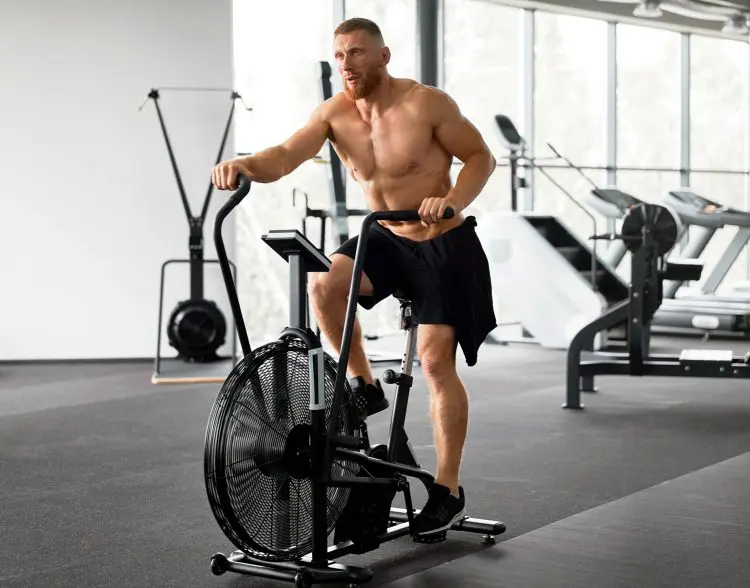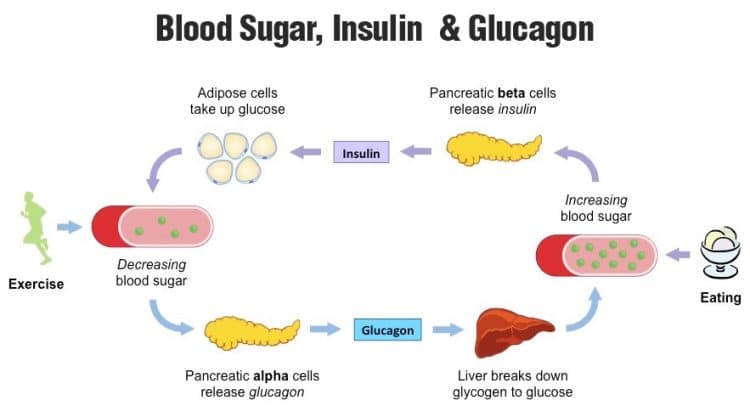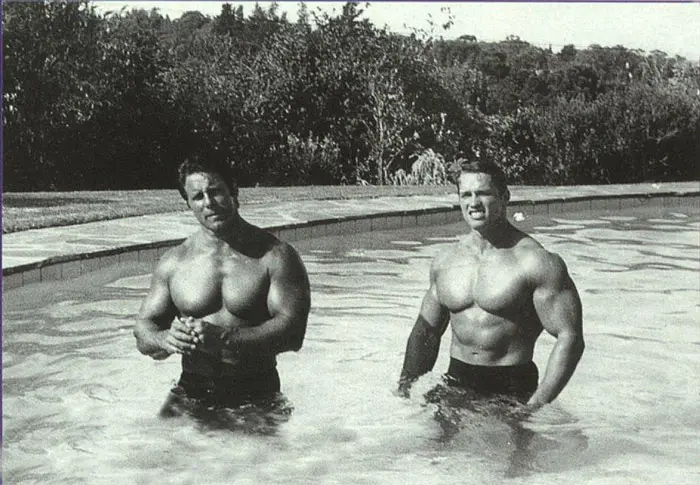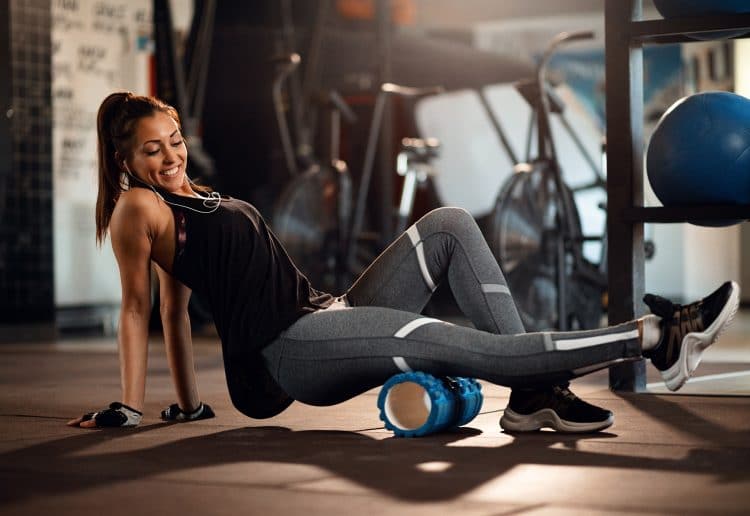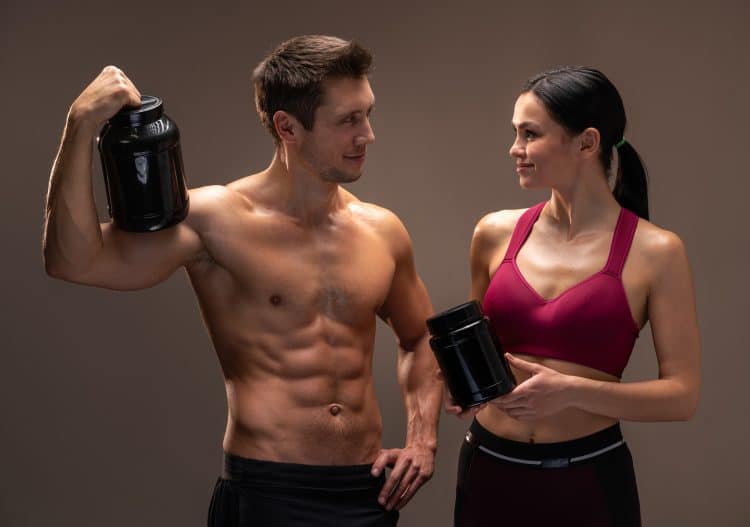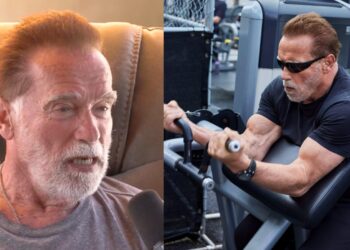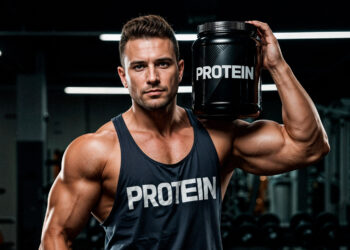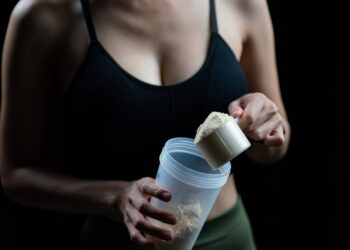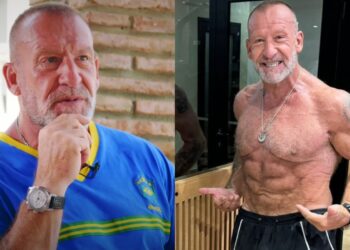Most lifters have a love-hate relationship with delayed onset muscle soreness, known as DOMS for short. They love the fact it shows they’ve trained hard, but they usually hate its debilitating effect. It is a type of pain, after all!
But does muscle soreness really mean your workout triggered gains? Is it something you need to actively pursue? Is a DOMS-free workout a waste of time? Can DOMS be reduced or avoided?
Let’s lift the lid on DOMS!
What is Delayed Onset Muscle Soreness (DOMS)?
Delayed onset muscle soreness normally comes on 12-72 hours after a workout. Its severity can range from very mild to so severe you are unable to move without pain. The muscles themselves can even be too sensitive to touch. DOMS tends to ease gradually over a couple of days, but in very severe cases can take 5-7 days to entirely disappear.
DOMS is usually triggered by doing more exercise than usual, training harder than usual, or doing new exercises. It also tends to be worse after training that emphasizes eccentric muscle contractions, e.g., negative training, running downhill, or plyometrics, where you have to absorb heavy landings.
It can affect all exercisers, but beginners tend to experience DOMS more often because every workout and exercise they do is new.
Level Up Your Fitness: Join our 💪 strong community in Fitness Volt Newsletter. Get daily inspiration, expert-backed workouts, nutrition tips, the latest in strength sports, and the support you need to reach your goals. Subscribe for free!
DOMS is also more common if you train a muscle group infrequently. For example, if you blitz your chest once a week, you’ll probably get DOMS every time you train. However, if you train your chest 2-3 times a week, you’ll get less DOMS.
Sore muscles are also more common and severe after an extended break from training, e.g., after a vacation or a deload.
Some exercisers experience DOMS throughout their training careers, while others rarely get it at all. Also, DOMS can affect some muscle groups more than others. For example, you might find it easy to trigger DOMS in your chest and hamstrings but get it much less in your biceps or deltoids.
Weirdly, despite DOMS being such a common affliction, the exact cause is unknown. However, proposed mechanisms include:
- Micro muscle tears that cause inflammation
- Accumulated lactic acid that is not flushed away after exercise
- Depletion of muscle glycogen (stored carbohydrate)
- Increased free-radical production, which causes inflammation
- Magnesium depletion
It’s very likely that several of these factors combine to cause DOMS as they all occur after intense exercise.
DOMS and Gains
Does being sore after a workout indicate that you’ll gain muscle, and is a lack of soreness an indicator that your workout was a waste of time?
The answer to both these questions is no.
DOMS is mainly a sign that you have exceeded your body’s current work capacity – either in duration, intensity, or exercise difficulty. That’s why it’s worse for beginners, after coming off a layoff, or when you start a new workout using different exercises.
As your body gets used to your new workout, you will experience much less DOMS, even if you gradually increase the load and reps as you should to increase muscle size. Those first few workouts, however, can be killers!
The severity and duration of DOMS can be reduced by eating carbs before and after training and also consuming branched chain amino acids during your workout. This suggests that DOMS is not an indicator of a successful workout but is affected by nutrition as much as it is exercise.
Training just to create DOMS is a lot like walking just to get blisters on your feet. That doesn’t mean DOMS is a bad thing; it’s just not something you need to actively pursue.
In fact, very severe DOMS should be avoided where possible. For example, suppose your DOMS is so bad that you have to skip workouts, modify your workouts, or are unable to do your chosen exercises with proper form. In that case, you are clearly doing more harm than good.
Olympic weightlifters, who typically train most days of the week and even several times a day, do everything they can to avoid DOMS as it would disrupt their workouts. However, that lack of DOMS does not stop them from getting very big and strong.
Incidentally, one of the ways they avoid DOMS is by doing very little eccentric training; they lift weights but usually drop them instead of lowering them. That’s why they use rubberized bumper plates and shock-absorbing lifting platforms.
While there is no reason to purposely seek out DOMS, it’s still important that you feel “something” the day after your workout. If your muscles don’t feel a little tighter, fuller, or harder the day after training you probably didn’t work hard enough.
How to avoid DOMS
There are a few things you can do to avoid triggering severe DOMS. You still might not prevent it entirely, but you should be able to ensure it is less incapacitating.
- Warm-up thoroughly and increase your weights gradually over several sets.
- Introduce new exercises slowly. Master the new movement with light weights before you start adding lots of resistance.
- Increase weights and training volume (sets/reps) gradually over several weeks and months.
- Don’t jump straight back into intense training after a layoff.
- Don’t over-emphasize the eccentric part of your reps. Lower the weight under control, but do not go super slow. Avoid running long distances downhill, too.
Related: Upper Body Warm-Up You Should Be Doing Before Every Workout.
Eight Ways to Overcome Delayed Onset Muscle Soreness
Whether DOMS is a frequent fact of life or just an occasional inconvenience, there are several things you can do to reduce its severity and quicken its departure.
1. Never skip your cool-down
The last thing you probably feel like doing after an intense workout is more exercise. Still, just a few extra minutes could reduce muscle soreness and speed up recovery. Coming to a dead stop is a good way to make muscle soreness much worse than it needs to be.
Level Up Your Fitness: Join our 💪 strong community in Fitness Volt Newsletter. Get daily inspiration, expert-backed workouts, nutrition tips, the latest in strength sports, and the support you need to reach your goals. Subscribe for free!
At the end of your workout, hop on any cardio machine and do five easy minutes. Slow down minute by minute until your heart and breathing rate are back to normal. This will pump oxygenated blood into your hard-worked muscles, flushing away lactic acid in the process.
After that, do some gentle static stretches for the muscles you have just trained. Spend 30-60 seconds on each one, easing into your stretches and trying to go a little further as you feel your muscles begin to relax. Dynamic mobility exercises can also be helpful.
2. Prioritize post-exercise nutrition and hydration
Intense training takes a lot out of your muscles, which may be one factor that contributes to muscle soreness. Glycogen, which is carbohydrate stored in your muscles, and the muscles themselves are depleted and damaged. Proper post-exercise nutrition may help reduce or even prevent muscle soreness, as well as give your recovery a kickstart.
As soon as you have finished your cardio and stretching cool-down, take a moment to drink a fast-acting carbohydrate and protein shake. Alternatively, eat something like tuna and rice. This will provide your muscles with exactly what they need to recover quicker, and, hopefully, you’ll experience less soreness.
Hydration also plays a role in preventing or reducing muscle soreness, so make sure you consume plenty of water after your workout. How much depends on how hydrated you were initially, how much you drank during your workout, and how much you lost through sweating. 500 milliliters/16 fluid ounces per 30 minutes of exercise is a good place to start.
3. Try contrast showers
You probably won’t have time for a massage after your workout, but you should have time for the next best thing – a contrast shower. Simply hop under the spray and alternative between hot and cold water for a few minutes. The cold water will cause your blood vessels to constrict, while the hot water will make them expand.
This creates a pumping effect that increases circulation, forcing freshly oxygenated blood into your muscles and removing lactic acid. In addition, cold water has an anti-inflammatory effect which may help reduce DOMS further.
4. Go for a walk
If you worked hard in the gym, you probably feel like crashing on the sofa and recovering your energy ready for next time. Unfortunately, while you probably deserve a rest, being inactive could make muscle soreness worse.
You’ll get over your DOMS quicker if you get up and move. Going for a walk is ideal as it’s accessible, low stress, and barely even counts as exercise. Still, it gets your heart pumping, your muscles moving to help clear lactic acid from your body. Walking also emphasizes your legs which are the muscles usually most affected by DOMS.
So, get up, get out, and walk for 20-30 minutes at a brisk but not exhausting pace. You should feel pleasantly warm, slightly out of breath, but well within your limits. Walking after and between workouts can have a significant impact on muscle soreness.
5. Do a 50/50/50 workout
It can be tempting to wait out DOMS. After all, it’ll pass in a few days. But, you’ll recover faster if you do a 50/50/50 workout the following day. Simply do the same workout but use 50% of the weight, do 50% of the reps, and perform 50% of the sets.
This helps get you up and moving again, facilitating a faster recovery. This should be very easy and not feel like a workout. A 50/50/50 workout can be completed on what might usually be a rest day. Wear compression clothingto help warm and support your muscles to make this strategy even more effective.
6. Try some self-massage
Massage passively stretches and relaxes your muscles, mobilizes your joints, and improves circulation. You don’t need to visit a masseuse to get a massage, although you can if you want. Just grab a foam roller and use it on any muscles that are affected by DOMS. Start off easy but feel free to increase the pressure as the tension melts away.
7. Apply some heat
While your muscles might be too sore to touch, making deep massage inadvisable, passive heat can be very beneficial for reducing DOMS. Use a heating pad, hot towels, a hot bath, or a hot water bottle to help relax your muscles, reduce DOMS pain, and increase microcirculation.
Combined with some gentle stretching and light movements, heat will reduce stiffness and help get you up and moving again.
8. Supplements
It’s generally best to avoid using non-steroidal anti-inflammatories (NSAIDs) to treat DOMS. Overuse of things like Ibuprofen and Tylenol can cause unwanted side effects, such as stomach pain, dizziness, and auditory problems. If you are absolutely crippled by DOMS, you could take some NSAIDs. Still, it’s generally best not to use them regularly or for extended periods.
That said, there are few supplements that may reduce the severity and duration of DOMS, including:
- Fish oils
- Creatine
- Vitamin D, C
- Branched chain amino acids
- Glutamine
- High-carb sports drinks
- Whey protein
- Zinc, magnesium, and vitamin B (ZMA)
- L-carnitine
DOMS – Wrapping up
Every lifter experiences DOMS from time to time. It’s part and parcel of the workout experience. The harder you train, the more likely you are to experience post-exercise muscle soreness and tenderness, and some people seem genetically predisposed to DOMS.
That said, there is no need to train specifically to trigger DOMS as it is NOT an indicator that your workout was successful. Athletes and Olympic weightlifters train hard while minimizing DOMS, and they still make excellent progress. If DOMS stops you from training or forces you to modify your next workout, it could actually undermine your results.
A modest level of DOMS can be gratifying, and it’s good to feel the aftereffects of your workouts. However, if your muscles hurt so much that you cannot move without severe pain, you are probably doing something wrong.

